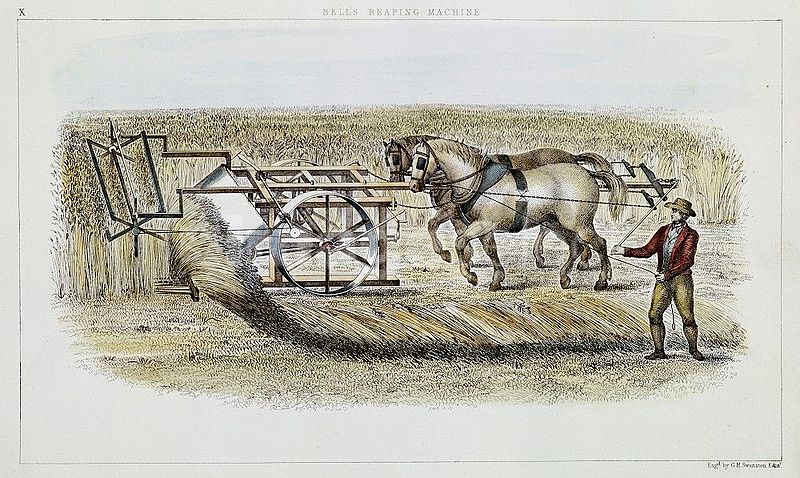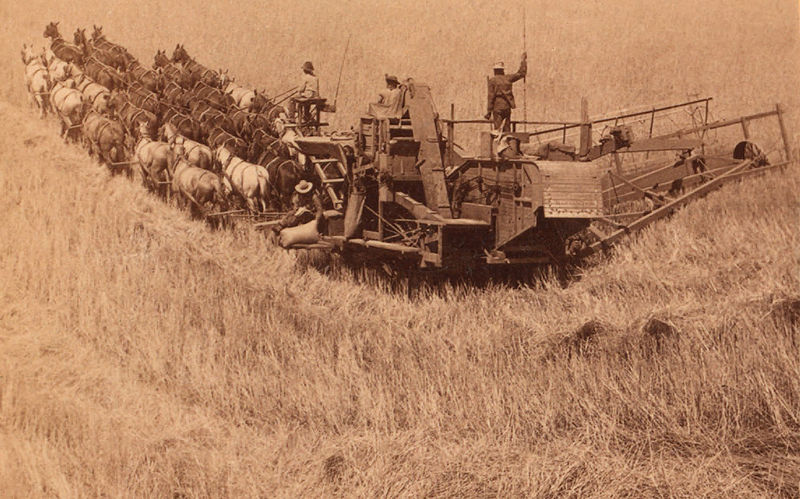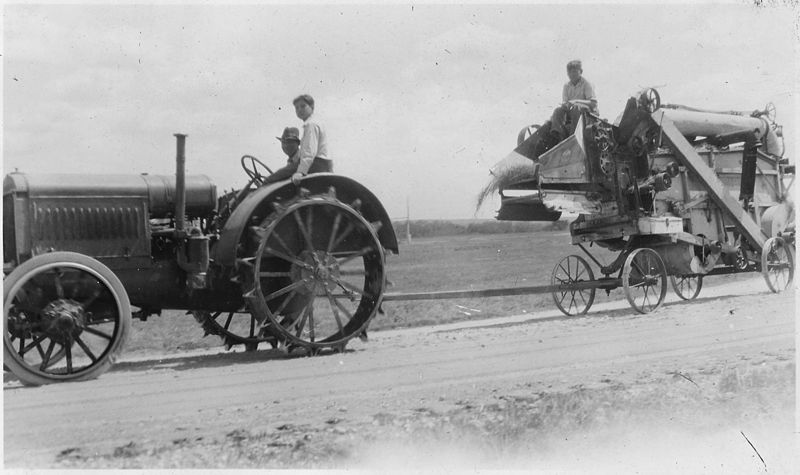This edition in our ‘Brief History of…’ series, we are looking at Combine Harvesters. They started as horse drawn and now rein fierce over the crop fields as high-powered machinery.
A combine harvester or ‘combine’ got its name because the machinery combines three harvesting operations – reaping, threshing, and winnowing – into a single process. It is now one of the most important pieces of farm machinery as it saves a considerable amount of time and the number of workers needed since it completes multiple jobs at once.
The Reaper machines

In 1826, a Scottish inventor named Reverend Patrick Bell designed the first accounted reaper machine that used scissors to cut the crops (known as the scissor principle, which is still used today). The Bell machine, as it was named, used a revolving 12 vane reel to pull crops over a cutting knife, which was propelled by horses who would push the machine. As a man of God, Bell believed his machine should benefit all mankind therefore he never sought a patent meaning he never benefited financially from the machine’s success, which is still in use today.
First combine harvester
In 1835, Hiram Moore built and patented the first combine harvester in the United States. This machine could do the three jobs (reaping, threshing, and winnowing) to cereal grains. Later that same year, Moore built a full-scale version of the combine which measured 17 ft by 15ft. It required 20 horses to pull the machine as it was so large.

Integrating steam engines
In the late 1880’s, a California farmer George Stockton Berry decided to integrate the combine with a steam engine to provide power to the mechanics and save his animals which were dying from heat exhaustion. The steam engines saved the use of 32-36 horses, mules, or ox which he needed for his combine. Impressively, the machine worked exactly how he designed it with two engines being used, one to self-propel it and drive the cutting blades, and the other to run the separator.
Self- propelled combines

At the start of 1915, International Harvester released its first line of tractor-pulled combines. They had engines aboard that powered the threshing mechanisms. It wasn’t long before J.I Case and John Deere also released their versions of the tractor-pulled combine harvester. These types of tractor-drawn combines were rapidly adopted after the Great War as this was when farmers frequently started using tractors on their farms.

The Australian born Thomas Carroll who worked for Massey-Harris (now Massey Ferguson) ‘perfected’ the self-propelled model of the combine harvester in 1937. In 1940, a lighter-weight model began to be marketed widely by Massey-Harris which became famous for its role in the ‘Harvest Brigade’. After World War 2, there was a high demand for Massey-Harris combines because of their success in the war effort.
The modern day combine harvester
The modern-day combine can harvest 25 acres of grain per hour, still completing the three tasks Bell set out for the machine to do. The difference is that today’s combines can be driven by one person whereas the original versions required large teams of people and animals to complete the same tasks. With the rapid growth of technology, today’s combine can also come equipped with cameras and filed mapping GPS systems to aid in harvesting whole fields of crops.

To this day, you will be able to find a combine harvester on nearly every crop farm as a key part of day-to-day farming, all thanks to Reverend Patrick Bell.
Read more of the latest news from us



